Will the sun shine again on Maldives tourism?
The coronavirus outbreak has hit the Maldivian economy hard, as travel restrictions and other preventive measures affected the country’s lucrative tourism industry, which contributes to the bulk of the island nation’s state revenue and foreign reserves, writes Kavita Bajeli-Datt for South Asia Monitor
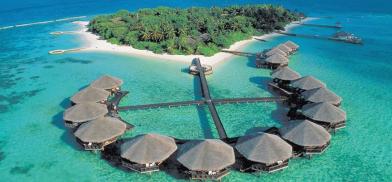
Exquisite white sandy beaches, turquoise blue sea, beautiful reefs, incredible underwater marine life, and other recreational pursuits like scuba diving, snorkeling, and surfing - the Maldives, the Indian Ocean paradise, offered all this and more. But this high-end tourism-dependent island nation has taken a big economic hit from the COVID-19 pandemic. And the road to recovery looks very hard, at least for its tourism sector.
The idyllic archipelago was once considered a prime luxury holiday destination, particularly popular among global wealthy. It was just last year in 2019 that it attracted a record 1.7 million tourists. And encouraged by the massive influx of holidaymakers, the country of just over 500,000 people had set an ambitious target for 2020: receiving two million tourists. However, that was before the coronavirus pandemic brought the world and the Maldives to a standstill and with it its tourism industry.
But all is not lost.
The country is aggressively planning to re-open its tourism industry as the tropical nation - that lies southwest of India and Sri Lanka - is heavily dependent on tourism for its foreign exchange earnings. Tourism, directly and indirectly, accounts for nearly two-thirds of the country's gross domestic product (GDP), according to the World Bank. The industry also employs the single largest proportion of the Maldivian workforce.
'Road to recovery'
The Maldives Tourism Minister Ali Waheed had last month announced that the country will commence “safe tourism” soon. He stated that if things go well, the country can start welcoming tourists once again in the last quarter of the year hopefully. The government had formulated five scenarios with possible timelines for reopening borders and the tourism sector. The most likely scenario projects a July date for reopening the borders and restarting tourism in October. In the worst case, borders may only open by January 2021.
Keeping this in mind, a mega event has been planned by the Maldives Marketing and Public Relations Corporation (MMPRC) on June 8 in which a new promotional campaign “Maldives, The Sun Will Shine Again” will be launched. In the three-hour Facebook live event, well-wishers from around the world, including celebrities, influencers, artists and fans of the Maldives will join tourism promotion officials from the island nation “to show their love, sentiments, wishes, memories, and messages to remind that ‘The Sun Will Shine Again’ in the Maldives.
“…. [the event aims] to announce [to] the world that we are on the road to recovery and we are committed to welcoming the tourists to the sunny side of life,” the local media quoted the tourism department statement.
The coronavirus outbreak has hit the Maldivian economy hard, as travel restrictions and other preventive measures affected the country’s lucrative tourism industry, which contributes to the bulk of the island nation’s state revenue and foreign reserves.
On March 8, Maldives reported its first case of the novel coronavirus, as two hotel employees tested positive for COVID-19 at a luxury resort in one of its 350-odd inhabited islands. The cases soon started piling up. Soon, the Maldives announced a state of public health emergency on March 12, the first such declaration under a recent public health protection law. The public health emergency declaration has allowed the government to introduce a series of unprecedented restrictive and social distancing measures, including stay-at-home orders in capital Male and its suburbs, a ban on inter-island transport and public gatherings across the country, and a nationwide closing of government offices, schools, colleges, and universities. Further, gyms, cinemas, and parks have been shut. Restaurants and cafes in the capital have been asked to stop dine-in service and switch to takeaway and delivery. A nationwide shutdown of all guesthouses, city hotels, and spa facilities located on inhabited islands is also in effect.
Authorities have since converted at least 10 luxury resorts into coronavirus quarantine centers.
The country has already suspended all international airlines and enforced a blanket suspension on-arrival visa in late March in a bid to combat the spread of the virus. But even before the visa suspension, the Maldives had closed its borders to arrivals from some of the worst-hit countries. Cruise ships and foreign yachts - a major source of high-end tourists - were banned from docking at any of the country’s ports.
Its biggest market is China, where the virus was first detected in December before it spread worldwide. More than 250,000 Chinese tourists visited the Maldives in 2019. India and Italy are in the second and third positions — the latter being the worst-hit country in Europe in terms of deaths. On May 22, the nation reported 1,216 cases, four deaths and 91 recoveries.
With arrival numbers falling and the visa suspension in effect, several resorts have shut, bringing untold hardships to tourism industry workers as many have lost jobs or forced to go on holiday without any pay.
Economy takes a big hit
Officials said the tourist arrivals saw a year-over-year decline of 22.8 percent in the first 10 days of March. They added the number of tourist arrivals to the Maldives could drop by half in 2020. The $5 billion-dollar economy grew by 6.7 percent in 2018 with tourism generating 60 percent of foreign income. However, the government is at present projecting a possible 13 percent economic contraction this year — an estimated $778 million hit.
The World Bank has projected the real GDP of the Maldives to contract by 8.5 percent in 2020. The US credit rating agency Fitch downgraded the Maldives to "B" and revised its outlook from stable to negative. "Fitch expects the Maldives' economy to be hit hard by the coronavirus pandemic because of the dominance of the tourism sector.”
"The Maldives has recorded few COVID-19 cases so far… but tourism receipts will nevertheless remain close to zero for months due to global conditions," it said.
Although, the tourism minister had announced that hopefully “the Maldives will become the first COVID-19 free country in the Asia region” and the government was “conducting surveys to begin safe tourism when we reach that road”, the minister was cautious enough to add that the “government’s first and foremost priority was the safety of its citizens.”
In an interview with India Today television channel, Maldives Foreign Minister Abdulla Shahid had agreed about the huge economic impact due to the COVID-19 on its tourism sector. “We had two million tourists visiting us last year and we were hopeful of an 8 percent growth on the number this year, but we have zero growth now.
“There have been no tourists arriving for the last three months also. The situation is really bad. The government's revenue cash flow has been hit.But if timely assistance does not come during this pandemic and afterward we are going to slide back and be at the bottom of world business. This is not something that neither the international community nor the Maldives will be proud of,” he had said.
'Safe tourism'
Despite the gloomy prediction, the country has been quietly drafting a policy to reopen and revive this key sector. Titled as the “Safe Tourism Guidelines”, the policy covers safe tourism resort licenses, to be given to those fulfilling the safety requirements, as well as the policies on testing all tourist arrivals into the country for the virus. The policy was drafted after extensive discussions with various industry stakeholders by the tourism ministry, according to Sun Online International. Tourism Minister Waheed has recently discussed the policy with all stakeholders and sought their opinion.
As per the policy resorts will have to give a licensing fee of $ 50,000 for the issuance of a safe tourism license. It also mentions that all tourists should be transported through pre-approved vessels or aircraft cleared for all health and safety standards. The country has also planned to open for superyachts and private jets by next month, but they will have to pay a landing fee. It hopes to resume commercial flights by July. The guideline underlines that tourists’ must test for COVID-19 seven days prior to their arrival and are required to show negative PCR or a positive Anti Body Test of their samples upon arrival.
The special visa issued under the safe tourism guidelines will be granted only to tourists who would stay for a minimum of 14 nights and has confirmed booking in a tourist facility having a license. The tourist should also have valid travel insurance with medical coverage for the entire duration of stay. A special tourist visa fee of USD 100 for arrivals will be applicable.
The World Tourism Organization (UNWTO) has stated that tourism is one of the most affected sectors from COVID-19, estimating that in 2020 global international tourist arrivals could decline between 20-30 percent, from an estimated growth forecast of 3-4 percent in January 2020. This means a loss of US$30-50 billion in spending by international visitors.
Time will tell whether the tourism industry of this tropical paradise will be able to recover and bounce back to what it was in 2019 – before the COVID-19 halted the world.
(The writer is a veteran journalist and travel writer. The views expressed are personal. She can be contacted at kavita.b@spsindia.in)



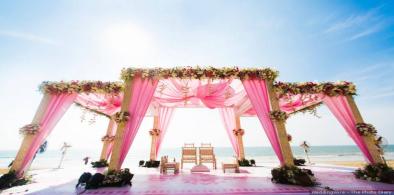
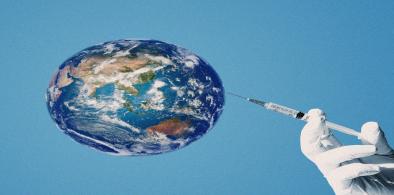

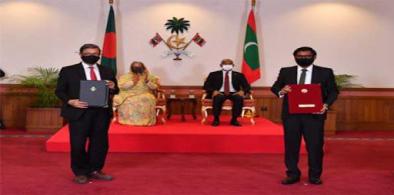
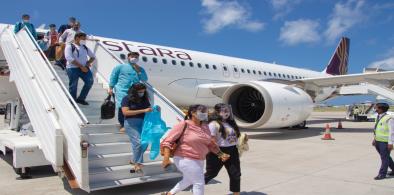
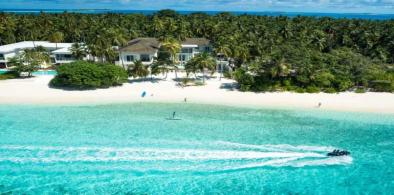
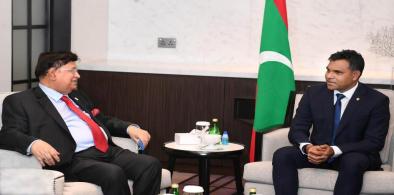











Post a Comment